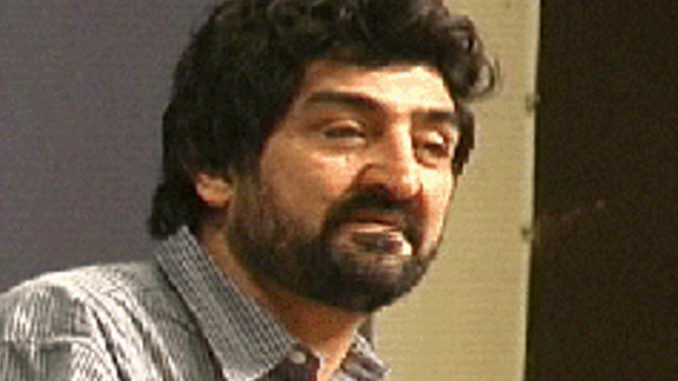
Tyranny and repression unavoidably depict an inverted picture of the political realities of the society. The fall of dictatorial regimes has always resulted in consequences other than what the political observers have expected on the basis of their previous observations. It is quite understandable that in a repressed atmosphere the true character, power and programs of political parties or forces, the balance of power between social forces, the direction and pace of political trends, and, most significantly, the true political and social inclinations of the people, of the various social classes, should not find an accurate reflection.
Iran under the Islamic regime is a living example of a repressed political environment with a flawed political profile and concealed history-making trends. Judging by appearances, the present and future political personages of Iran should be sought among the likes of Khatami[1], Yazdi[2] and Soroosh[3]. Apparently, ‘worker’ and ‘communist’ are not forces present at the center of political stage. Apparently, what determines the fate of Iran is Khatami’s smile and Khamenei’s health condition. Apparently, the discourses determining Iran’s future are the regurgitations, over and over again, of the categories of the Iranian Constitutional Revolution [of 1905-1911, in general,] and Mullahfied versions of [one of its two chief demands, that is,] ‘House of Justice’ [or Judiciary, in particular,] that saturate the pages of the seemingly ‘influential’ press media churned out by the circles of seemingly ‘alternative thinkers’ close to the regime itself.
News reporters and news fabricators, professors of Eastern studies, experts of Western states, nationalist parties, Third-Worldist, smitten-by-the-East groups and groupings that have for a long period been stricken by the self-described-communist syndrome for reasons beyond their own control, they are all eagerly staring at that jumbled scene, that distorted picture, and receive their conceptions, beliefs and inspirations from it. If we believe them, Iran stands at the threshold of yet another Islamic salvation! Domesticated Mullahs, together with an Islam perfumed with the rose-water of ‘modernity’, together with Muslim-enough alternative thinkers and alternative-thinking-enough Muslims, together with laws originating in Islam and a law-respecting Supreme clergy, these are supposed to usher Iran, through a gradual process devoid of any revolution or disturbance, into the era of the second Islamic Republic. This is [supposedly] the ‘civil society’ which, to the minds of the practicing Muslim Bazaar merchant and his Western-educated sons, the Iranian people have been longing for over the past century and, indeed, deserve. Iran is supposedly moving along this route.
Behind the scene of this extravaganza, however, the real history moves in a different direction. One should look farther, put the ear to the ground and feel the tremors of the foundations of this reactionary system. The current battle in Iran is not between hard Islam and soft Islam, or between the theocracy under the rule of the Supreme Clergy and the theocracy under the rule of law, but between freedom and tyranny, reaction and Islam in all their forms. In the developments lying ahead the personages in the foreground will quickly become irrelevant and disappear. In the camp opposing Islamic reaction we will then not find today’s petty reformists but the ranks of communism, consistent democratism, labor egalitarianism, consistent, that is, anti-religion, secularism, modernism, and thorough liberation for the women. These are the true inclinations of the great majority of the Iranian people which lie hidden under the veil of repression today, and are working to build the political future of the country.
Mansoor Hekmat
First published in Iskra (organ of Kurdistan Committee of the Worker-communist Party of Iran), No.3, April 4, 1998
Translator’s notes
[1] Mohammad Khatami, the so-called ‘smiling Mullah’, figurehead of the farcical state made ‘reformist movement’ who became president for two terms between 1997 and 2001.
[2] Ebrahim Yazdi, the Secretary General of Freedom Movement of Iran, a non-clerical Islamic-nationalist organization whose former Secretary General, Mehdi Bazargan, was commissioned by Khomeini to form the first government of the Islamic Republic. Ibrahim Yazdi was Foreign Minister in Bazargan’s cabinet. The organization was pushed into opposition against its will, only to remain at the service of the regime, following the fall of its government subsequent to raiding the American Embassy in the Summer of 1979.
[3] Abdolkarim Soroosh, an extreme right-wing Islamic philosophy scholar, a senior architect of the so-called ‘Cultural Revolution’ of the Spring of 1980 aimed at cracking down on the Left at the universities across the country during which dozens were killed and disappeared by the regime’s thugs and scores injured. He, along with many other architects of the nascent regime’s repressive security, military and paramilitary organs, then joined the so-called ‘reformist movement’ of 1997-201.
Translator: Maryam Namazie

Be the first to comment